Through his discovery of dynamite and the patent granted him (1867), Swedish inventor and chemist Alfred Nobel (1833–1896) quickly built up a considerable fortune. In his will and testament he stated that his fortune should be used to “create a fund, the yearly interest on which should be distributed as a prize to those who have contributed the most to humanity in the past year” (since 1901 called the Nobel Prize). The sum was to be divided equally into five for prizes in the following areas: physics, chemistry, physiology or medicine, literature and peace.
At the time, no one knew the extent of the impact Doppler’s discovery would have on the development of some of these scientific areas. Currently, 24 Nobel Prizes have been awarded for achievements in medicine, technology, and natural sciences which would not have been possible without the use of the Doppler effect.
2020
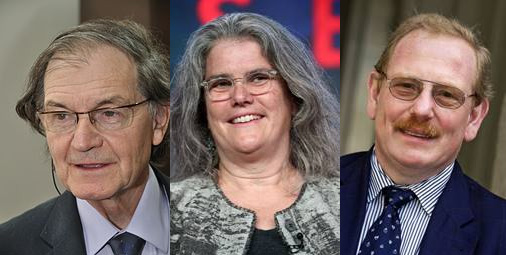
Study of black holes and the discovery of a supermassive compact object at the centre of our galaxy
Roger Penrose (* 1931, University of Oxford, UK)
Rationale for the award: “for the discovery that black hole formation is a robust prediction of the general theory of relativity”“
Andrea Ghez (* 1965, University of California, Los Angeles, USA) und Reinhard Genzel (* 1952, Max Planck Institute for Extraterrestrial Physics, Garching, Germany and University of California, Berkeley, USA)
Rationale for the award: “for the discovery of a supermassive compact object at the centre of our galaxy”
https://www.nobelprize.org/prizes/physics/2020/advanced-information/
https://www.nobelprize.org/prizes/physics/2020/press-release
Bild (Penrose): Wikipedia/Wikimedia Commons (CC BY 3.0), Link
Bild (Ghez): zimbio.com, Link
Bild (Genzel): Wikipedia/Wikimedia Commons (cc-bCC BY 3.0), Link
2019
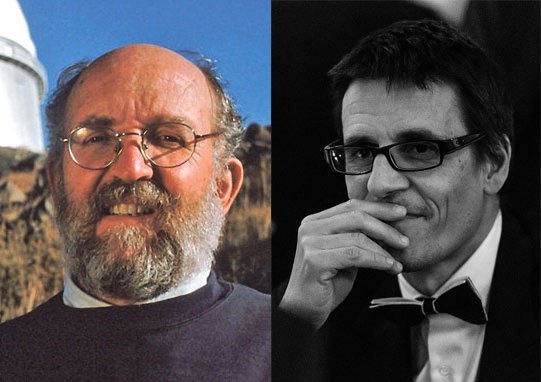
Discovery of the first exoplanet (Mayor & Queloz) and theoretical discoveries in physical cosmology (Peebles)
Michel Mayor (* 1942, Schweiz), Didier Queloz (* 1966, Schweiz)
Rationale for the award: “for the discovery of an exoplanet orbiting a solar-type star.”
Image (left): European Southern Observatory, Wikipedia/Wikimedia Commons (cc-by-sa-2.0), CC BY-SA 2.0, Link
Image (right): M.McCaughrean (ESA)/ESO, Wikipedia/Wikimedia Commons (cc-by-sa-4.0), CC BY-SA 4.0, Link
2011

Discovery of the accelerating expansion of the Universe through observations of distant supernovae
Saul Perlmutter (1959 – , USA), Brian P. Schmidt (1967 – , USA) und Adam Riess (1969 – , USA)
Rationale for the award: “for the discovery of the accelerating expansion of the Universe through observations of distant supernovae.”
Image: Saul Perlmutter by Holger Motzkau, Wikipedia/Wikimedia Commons (cc-by-sa-3.0), CC BY-SA 3.0, Link
Image: Brian P. Schmidt by Tim Wetherell – photo taken by Tim Wetherell, CC BY-SA 3.0, Link
Image: Adam Riess by Holger Motzkau, Wikipedia/Wikimedia Commons (cc-by-sa-3.0), CC BY-SA 3.0, Link
2006

Research on cosmic background radiation
John Cromwell Mather (1946 – , USA) and George Smoot (1945 – , USA)
Rationale for the award: “for their discovery of the blackbody form and anisotropy of the cosmic microwave background radiation.”
Image: George Smoot by Nomo michael hoefner http://www.zwo5.de – Own work, CC BY 3.0, Link
2005

Contributions to the development of laser-based precision spectroscopy, including the optical frequency comb technique
John Lewis Hall (1934 – , USA) and Theodor Hänsch (1941 – , Germany)
Rationale for the award: “for their contributions to the development of laser-based precision spectroscopy, including the optical frequency comb technique.“
Image: Theodor Hänsch | Authorship not indicated in a machine readable format. Blinking Spirit is assumed to be the rights holder (based on rights-holder indications). Authorship not indicated in a machine readable format. It is assumed that it is an own work (based on the rights-holder indications)., CC BY-SA 3.0, Link
2001

For the achievement of Bose-Einstein condensation in dilute gases of alkali atoms and for early fundamental studies of the properties of the condensates
Eric Allin Cornell (1961 – , USA), Wolfgang Ketterle (1957 – , Germany) and Carl Edwin Wieman (1951 – , Germany)
Rationale for the award: “for the achievement of Bose-Einstein condensation in dilute gases of alkali atoms and for early fundamental studies of the properties of the condensates.”
Image: Eric Allin Cornell by Betsythedevine – Own Work, CC-BY-SA 4.0, Link
Image: Wolfgang Ketterle by Kzirkel – Own work, CC BY-SA 3.0, Link
1997

Development of methods to cool and trap atoms with the help of lasers
Steven Chu (1948 – , USA), Claude Cohen-Tannoudji (1933 – , France, born in Algeria) und William Daniel Phillips (1948 – , USA)
Rationale for the award: “for development of methods to cool and trap atoms with laser light.”
Image: Claude Cohen-Tannoudji (2007) by Amir Bernat – I phtographed., GFDL, Link
1989
Development of the Ion Trap Technique
Wolfgang Paul (1913–1993, Germany) and Hans Georg Dehmelt (1922-2017, USA – born in Germany)
Rationale for the award: “for their development of the ion trap technique”
1981
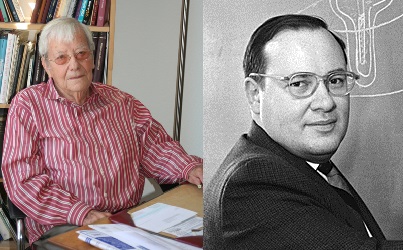
Contribution to the development of laser-spectroscopy
Nicolaas Bloembergen (1920-2017, USA, born in the Netherlands) and Arthur Leonard Schawlow (1921–1999, USA)
Rationale for award: “for their contributions to the development of Laser-spectroscopy”
1961
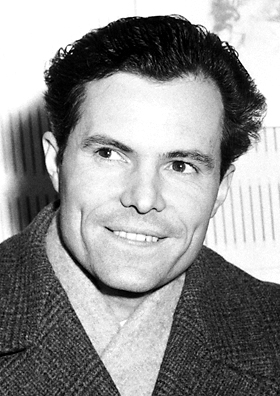
Research into the resonant and recoil-free emission and absorption of gamma radiation – the Mössbauer effect.
Rudolf L. Mößbauer (1929 – 2011, Germany)
Rationale for the award: “for his researches concerning the resonance absorption of gamma radiation and his discovery in this connection of the effect which bears his name“
Born in Munich, and at the age of 32, the youngest Nobel Prize winner at the time, Mössbauer discovered the following phenomenon: If an atomic nucleus is held within a crystal, its absorbtion behaviour is different to when it is in a free state, and in accordance with the Doppler frequency shift, the nucleus displays a different spectral line pattern.
1919
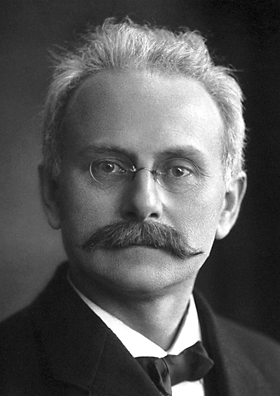
Proof of the Doppler effect through canal rays and the splitting of spectral lines in electric fields
Johannes Stark (1874–1957, Germany)
Rationale for the award: “for his discovery of the Doppler effect in canal rays and the splitting of spectral lines in electric fields” (Stark-effect)
The German physicist discovered the optical Doppler effect in canal rays in 1905. He could prove experimentally Doppler’s hypothesis that the movement of a source of light affected the frequency it emitted.

